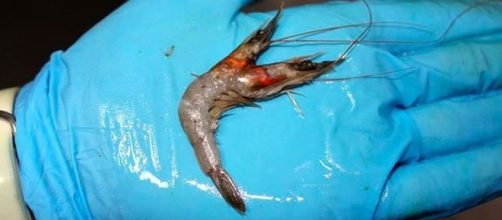The two-headed prawn was originally meant to feed the aquarium’s baby leopard sharks before it was discovered in a frozen food packet. In the words of scientistLaura Colton: “I was counting out a few prawns and fish and I grabbed a handful, and at first I thought there were two prawns stuck together. Then I realized it was one prawn with two heads.”
This sea creature appears to be unique.
No one at the Queensland Aquarium, including Ms. Colton, had ever seen a mutant like this before. At first, she couldn’t believe her eyes and then she saw that “there were two sets of guts and even two sets of legs coming from the front part of the creature as well…” According to Dean Jerry, James Cook University Professor and the director of the Australian Research Council: “The odds of seeing a two-head prawn is in the hundreds of millions…” Professor Jerry would like to conduct some genetic testing to gather more information about this truly bizarre creature.
It is his belief that “it is likely it was like a Siamese twin in humans or mammals, where during egg development…the egg splits into two, but it doesn’t completely separate.”
What could have caused this rare condition?
Every now and then a calf or a snake or a cow and sometimes even human beings give birth to two-headed offspring, but it is a very rare occurrence. Two-headed animals are a mutation with the scientific name of polycephaly. Some speculate that perhaps the marine animal was caught near the Fukishima nuclear power plant in Japan was affected by the radiation. Ms. Colton disputed this theory, as the prawn was purchased locally and she was certain that it couldn’t have come from that far away.
The wonders of nature.
Reef HQ has posted photos of the creature on its Facebook page but offers no answers. The myriad wonders of nature and the anomalies of the animal kingdom continue to mystify modern science, forcing even the most educated among us to humbly realize that there is more out there in the natural world that we don't know about than the other way around.
Indeed, there is no way the aquarium can explain this very weird sea creaturefor there are no answers right now.

